

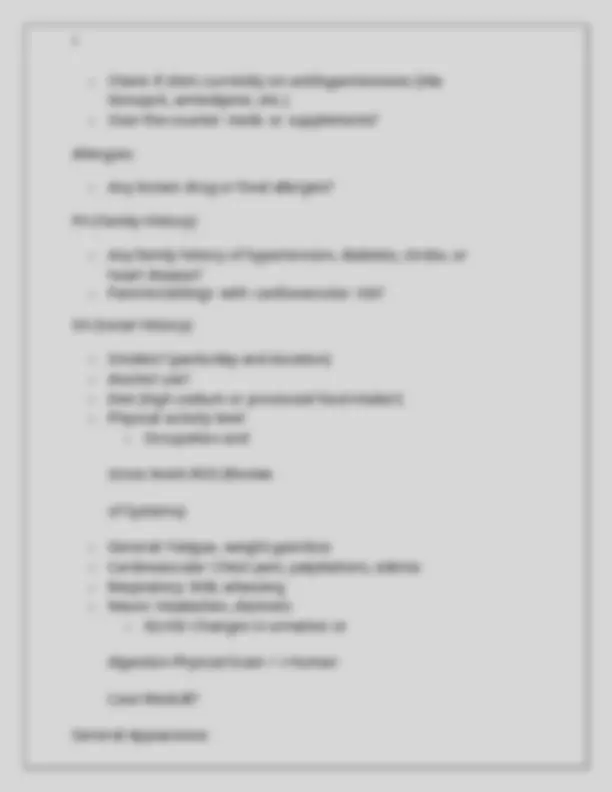
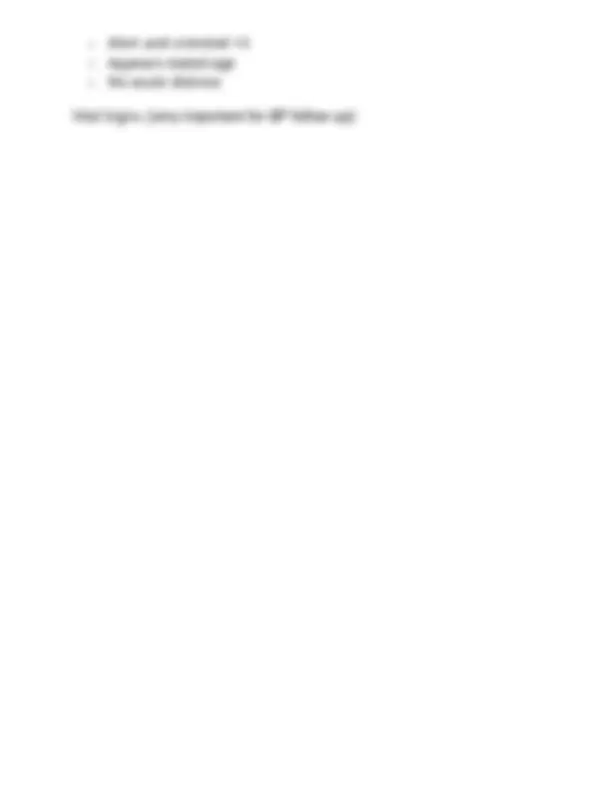
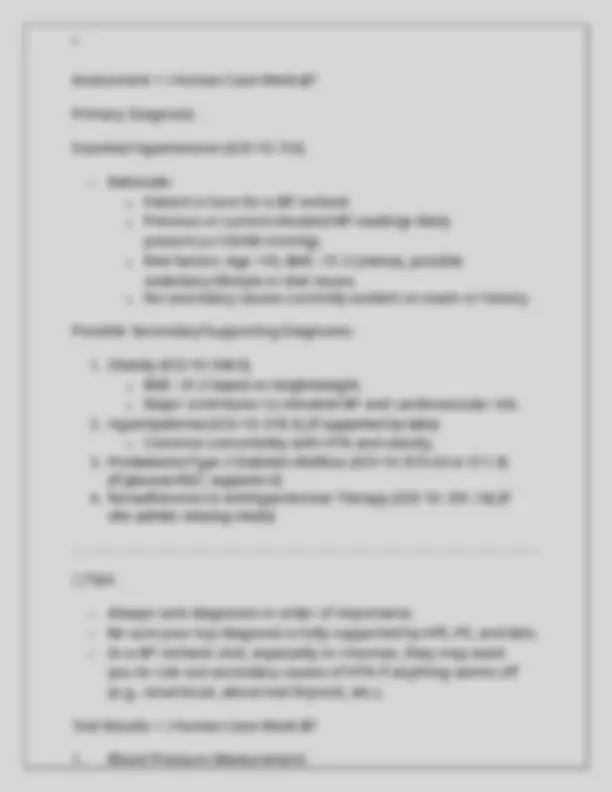
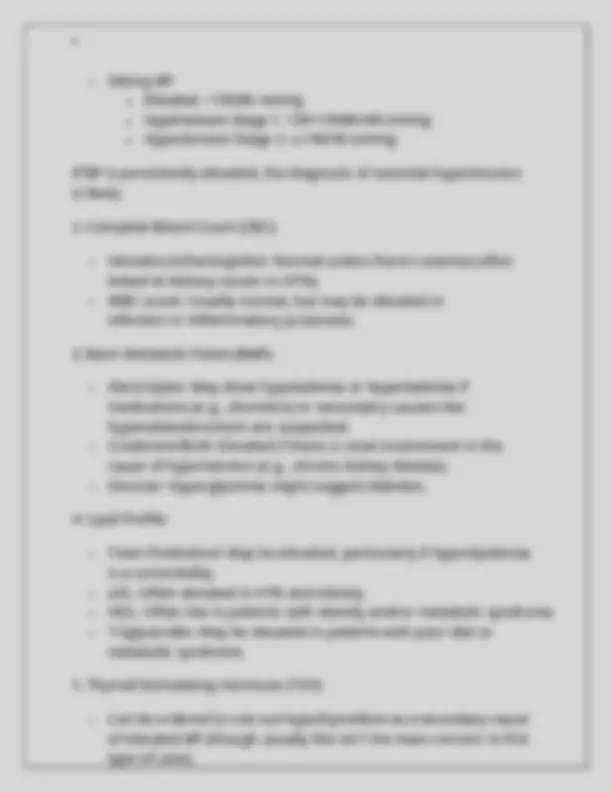

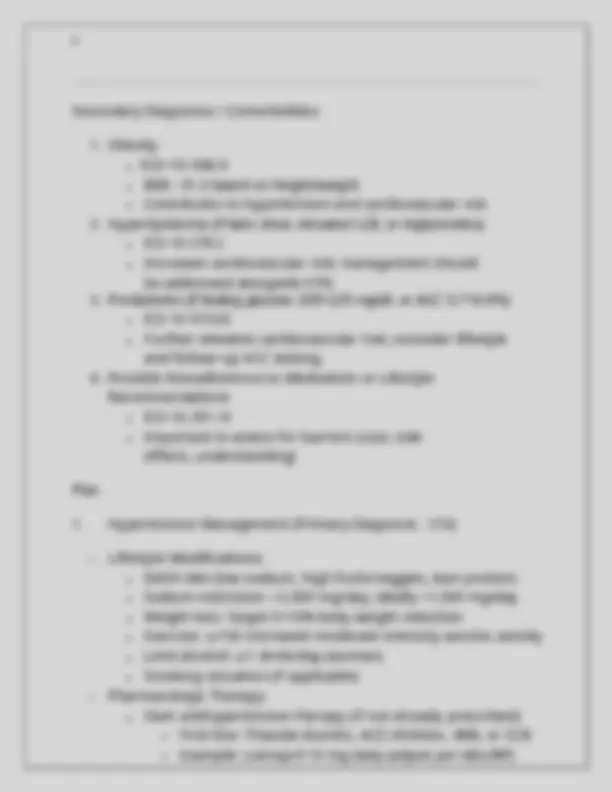
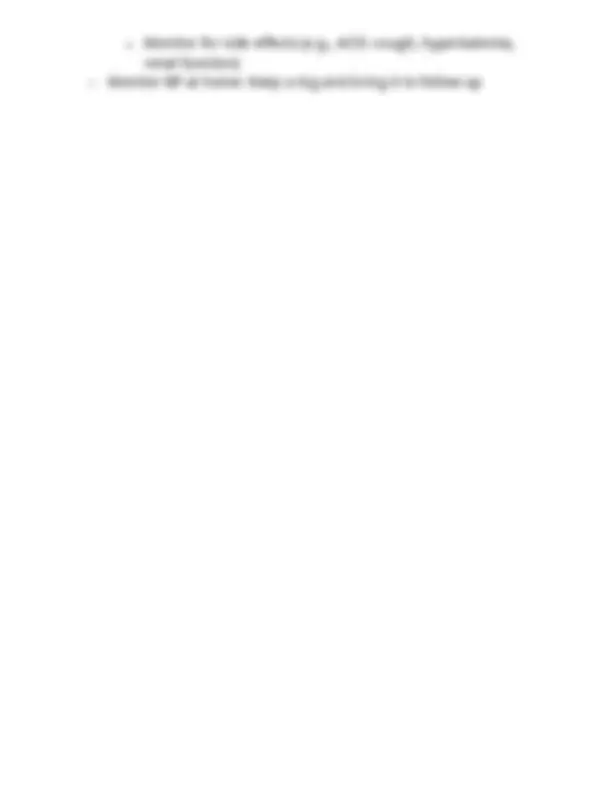
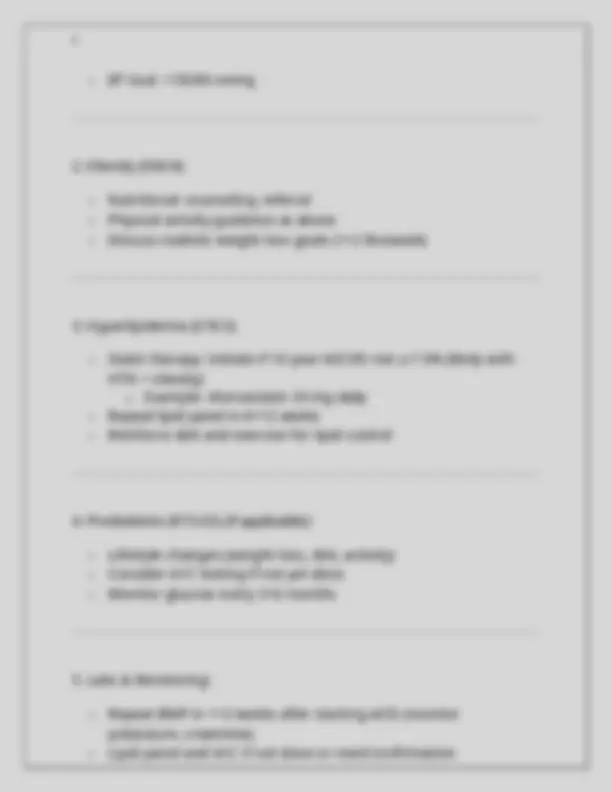

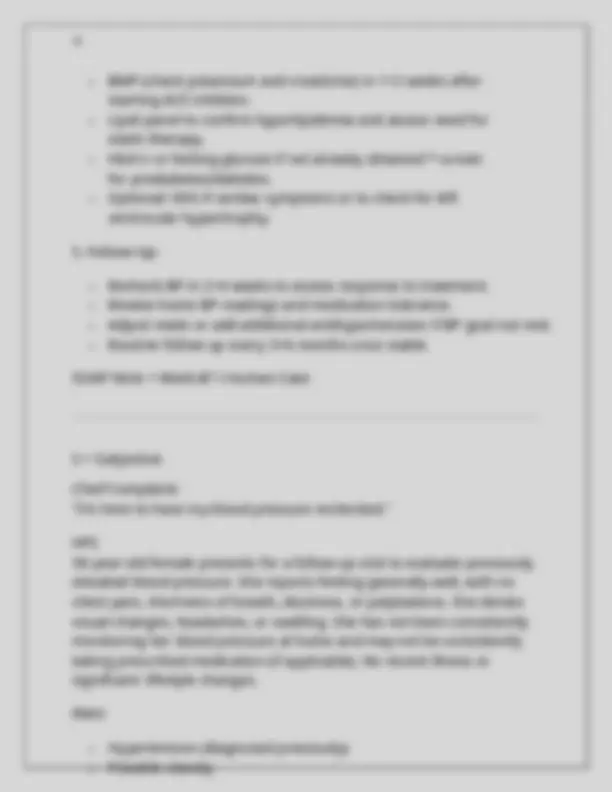

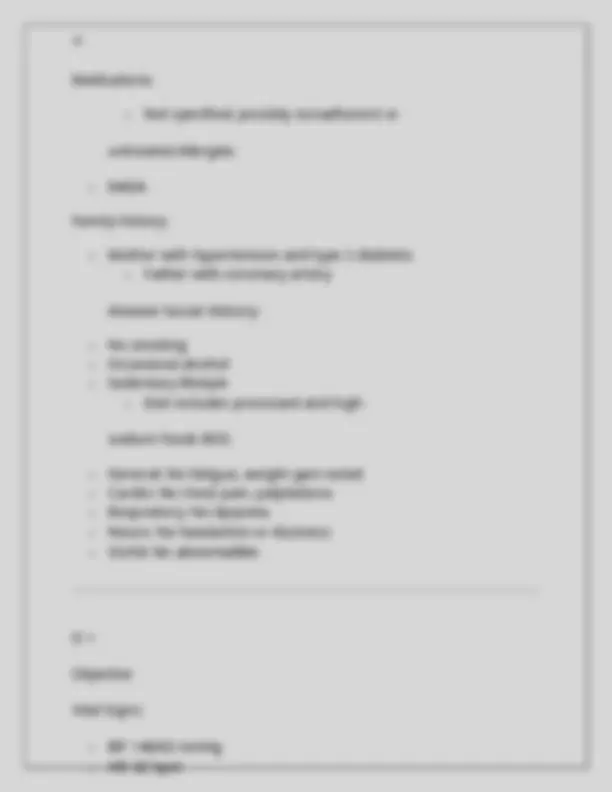

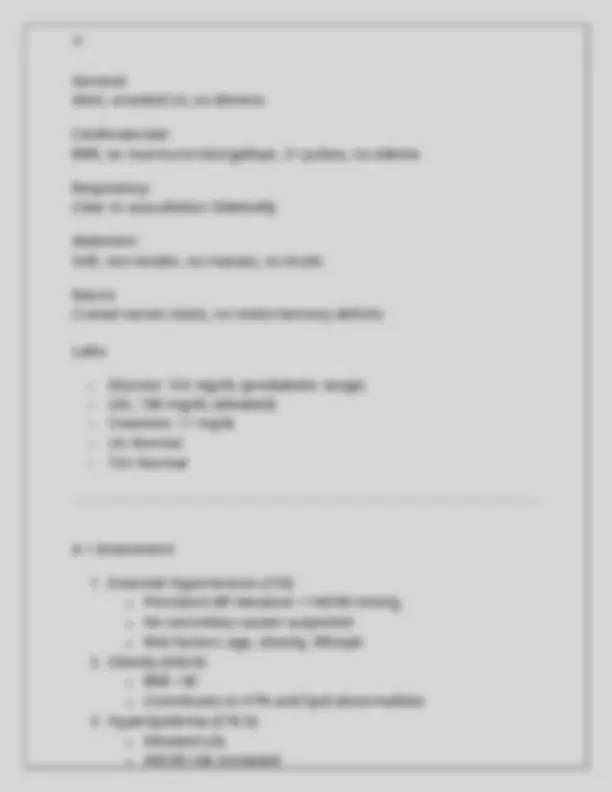
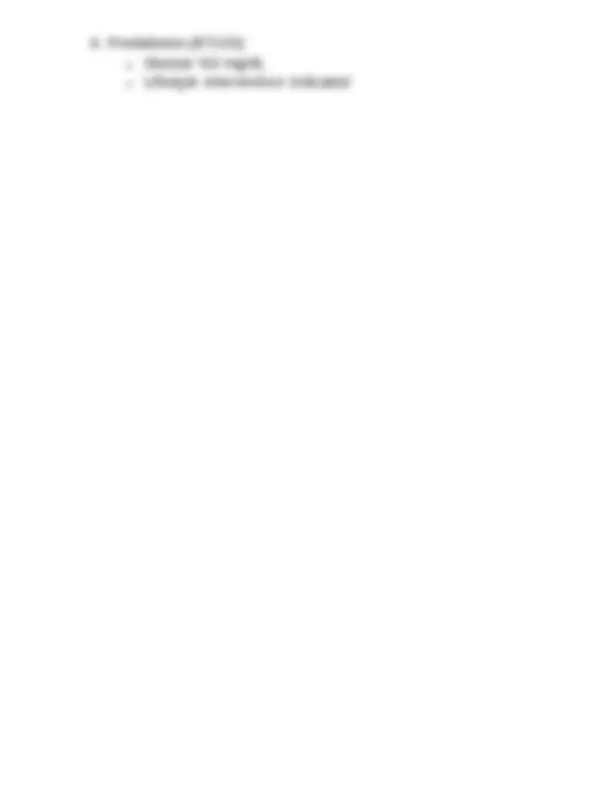
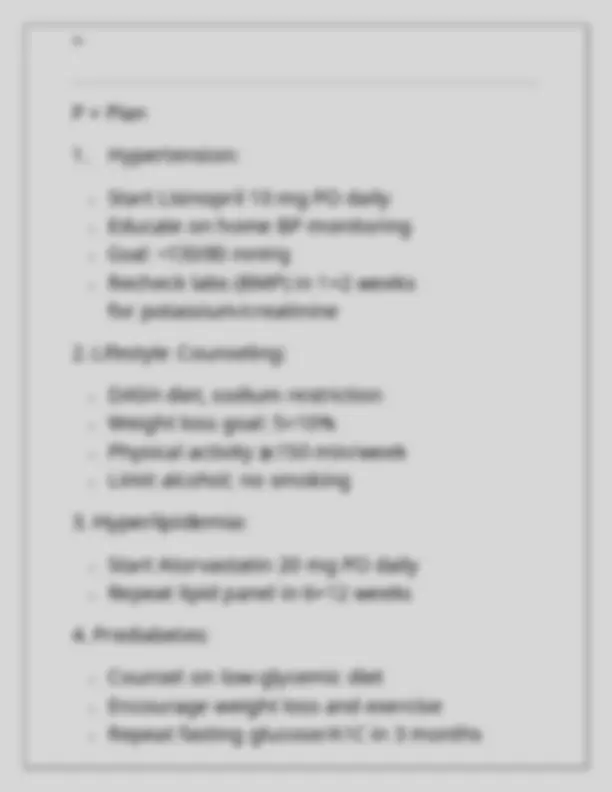
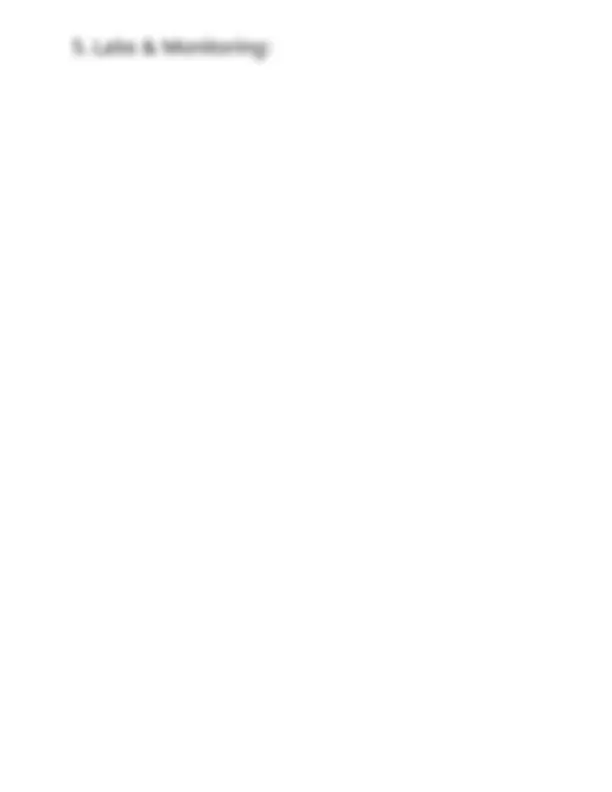
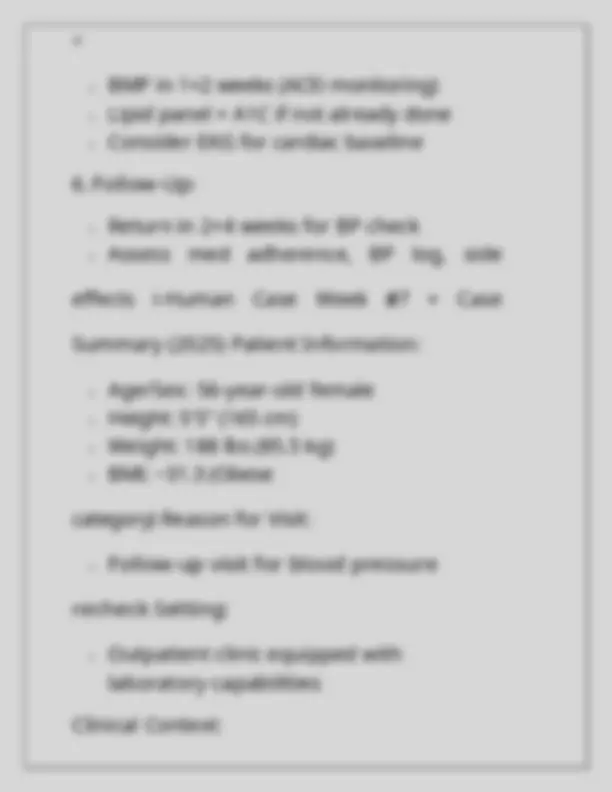
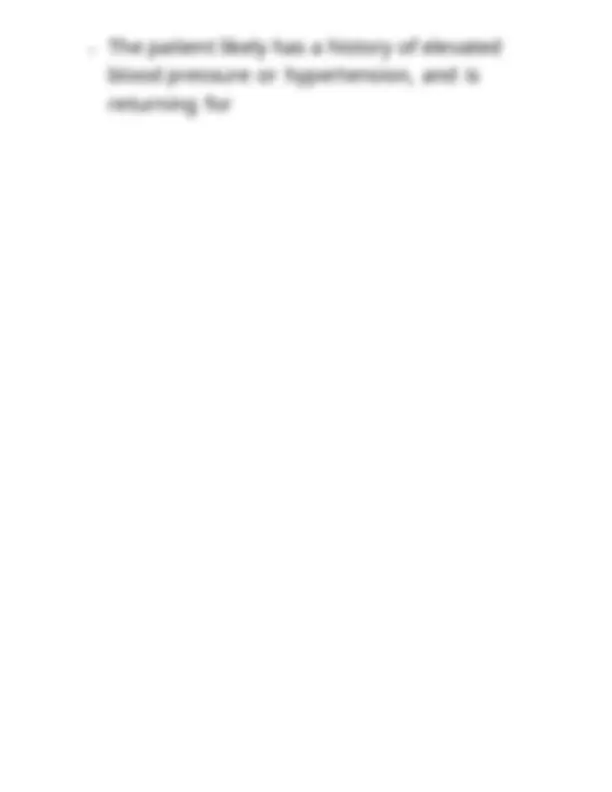
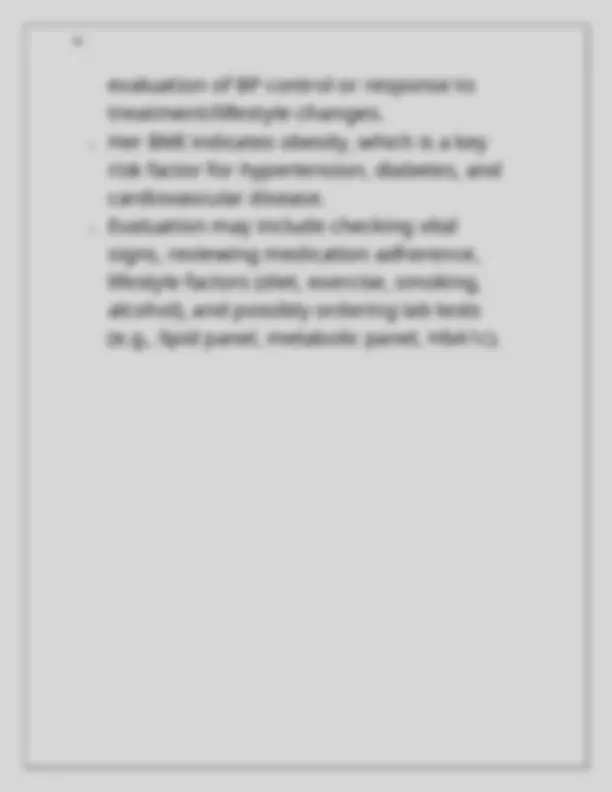







Study with the several resources on Docsity

Earn points by helping other students or get them with a premium plan


Prepare for your exams
Study with the several resources on Docsity

Earn points to download
Earn points by helping other students or get them with a premium plan
Community
Ask the community for help and clear up your study doubts
Discover the best universities in your country according to Docsity users
Free resources
Download our free guides on studying techniques, anxiety management strategies, and thesis advice from Docsity tutors
(CLASS 6512)I-HUMAN CASE WEEK 7 56 Y/O FEMALE HEIGHT: 5’5” (165 CM)WEIGHT: 188.0 LB (85.5 KG)REASON FOR ENCOUNTER: BLOOD PRESSURE RECHECK LOCATION: OUTPATIENT CLINIC WITH LABORATORY CAPABILITIES LATEST 2025
Typology: Exams
1 / 34

This page cannot be seen from the preview
Don't miss anything!



























1
Patient Profile: Age: 56 years old Gender: Female Height: 5’5” (165 cm) Weight: 188.0 lbs (85.5 kg) Reason for Visit: Blood pressure recheck Location: Outpatient clinic with laboratory capabilities Mode: Learning Mode (feedback appears after each section)
2 Attempts Available: 1 i- Human Case Week 7 Preview Patient Info (Top Left Panel): Photo: Female patient (appears middle-aged) Age: 56 y/o Height: 5'5" (165 cm) Weight: 188.0 lb (85.5 kg) Reason for Encounter: Blood pressure recheck Location: Outpatient clinic with laboratory capabilities Right Panel: Case Instructions Title: H&P+Dx Case Play Setup and Instructions Mode: Learning Mode o Feedback is provided after submitting each section. Attempts Allowed: o 1 attempt permitted for this assignment Sample History for i-Human Case 7: Blood Pressure Recheck HPI (History of Present Illness): 56-year-old female presenting for a follow-up to recheck her blood pressure. Denies chest pain, palpitations, dizziness, or syncope. May report occasional headaches or fatigue (check her answers during the interview). Could mention non-adherence to medications, lifestyle changes, or diet. PMH (Past Medical History): Hypertension (diagnosed previously)
3 Check if she’s currently on antihypertensives (like lisinopril, amlodipine, etc.) Over-the-counter meds or supplements? Allergies: Any known drug or food allergies? FH (Family History): Any family history of hypertension, diabetes, stroke, or heart disease? Parents/siblings with cardiovascular risk? SH (Social History): Smokes? (packs/day and duration) Alcohol use? Diet (high sodium or processed food intake?) Physical activity level Occupation and stress levels ROS (Review of Systems): General: Fatigue, weight gain/loss Cardiovascular: Chest pain, palpitations, edema Respiratory: SOB, wheezing Neuro: Headaches, dizziness GU/GI: Changes in urination or digestion Physical Exam + i-Human Case Week 7 General Appearance:
Alert and oriented × Appears stated age No acute distress
No lesions or ulcers Warm and dry
5 Assessment + i-Human Case Week 7 Primary Diagnosis: Essential Hypertension (ICD-10: I10) Rationale: o Patient is here for a BP recheck. o Previous or current elevated BP readings likely present ( ≥130/80 mmHg). o Risk factors: Age >55, BMI ~31.3 (obese), possible sedentary lifestyle or diet issues. o No secondary causes currently evident on exam or history. Possible Secondary/Supporting Diagnoses:
o Common comorbidity with HTN and obesity.
□Tips: Always rank diagnoses in order of importance. Be sure your top diagnosis is fully supported by HPI, PE, and labs. In a BP recheck visit, especially in i-Human, they may want you to rule out secondary causes of HTN if anything seems off (e.g., renal bruit, abnormal thyroid, etc.). Test Results + i-Human Case Week 7
7 Proteinuria or hematuria could indicate renal disease secondary to long-standing HTN. Microalbuminuria can also suggest kidney involvement.
8 Secondary Diagnoses / Comorbidities:
o ICD-10: E78. o Increases cardiovascular risk; management should be addressed alongside HTN
o ICD-10: R73. o Further elevates cardiovascular risk; consider lifestyle and follow-up A1C testing
o Monitor for side effects (e.g., ACEi: cough, hyperkalemia, renal function) Monitor BP at home: Keep a log and bring it to follow-up
EKG if any cardiac symptoms or baseline evaluation warranted Annual eye exam for retinal changes (HTN-related)
10
11 BMP (check potassium and creatinine) in 1+2 weeks after starting ACE inhibitor. Lipid panel to confirm hyperlipidemia and assess need for statin therapy. HbA1c or fasting glucose if not already obtained * screen for prediabetes/diabetes. Optional: EKG if cardiac symptoms or to check for left ventricular hypertrophy.
Hyperlipidemia or prediabetes (suspected) No history of cardiovascular events